Secrets of proper cultivation of herbs at home
Growing herbs is not as difficult as it might seem at first glance. Experienced gardeners are able to grow even the rarest and most exotic spices in their garden. What herbs can be planted, and how to quickly achieve good harvest?
Content:
- Growing basil
- Growing coriander in the garden
- Growing and caring for parsley
- Tarragon, or tarragon: growing
- Growing thyme (thyme)
- Growing fennel
Growing basil
Basil came to us from India. It can be used as a condiment and as a medicine. It has anti-inflammatory properties. Leaves basilica used to treat throat ailments, improve digestion and appetite. The extract of this plant is able to relieve cramps in case of intestinal and stomach colic.
If you plan to grow medicinal basil for the valuable essential oil, take an interest in the varieties. Those varieties that are intended for obtaining oil are unsuitable for food. Fresh basil is added to salads to add a special flavor. For the winter, it can be dried or frozen in ice cubes.
Basil is an annual plant with smooth, oblong leaves and white or pink flowers.
There are several rules for growing it:
- You can grow basil using seedlings or immediately by planting seeds in open ground. This should be done not earlier than May, when the warm days are already settled. With proper care, the seeds will sprout in two weeks. The seedlings must be watered regularly and the ground must be weeded. If the choice fell on the seedling method of growing, you need to plant seeds in pots a month and a half before planting in open ground.
- It begins to bloom in July-August. It is at this time that the greatest amount of nutrients and aroma accumulates in the leaves. As you know, it is the greens that are valuable in basil. To make it stand for a long time, you need to pinch the top and remove the flower buds. This will produce more lush plants with dense foliage.
- Care should be taken when choosing a variety. They differ not only in appearance, but also in smell and taste. Basil with purple leaves has a stronger and more persistent aroma. There are varieties with the aroma of lemon, clove, laurel and even caramel. Some of them can be added to tea and other drinks.
- Since the birthplace of the basil is India, it loves warmth and humidity. Plant it is needed exclusively in sunny places. Seeds will germinate only if the air temperature does not drop below +20 degrees. Fragile plants must be protected from the wind. Significantly increases yield soil quality. The best option would be fertile soils with a high content of humus.
Growing coriander in the garden
This persistent and highly aromatic plant is found on almost all continents. Coriander usually does not grow above one and a half meters in height. Its leaves have different shapes depending on the proximity to the base.
The flowers are white or pink, the fruits are small, grayish.
Coriander is eaten as a seasoning after the fruits are ripe.Until that moment, the smell is not very pleasant. For its specific smell, the ancient Greeks called it a bug.
Fresh coriander can be put in salads, soups, vegetable dishes, meat and even compotes, bread, sausages and pastries. In folk medicine, this plant is also popular. It is used to improve appetite, digestion, as a choleretic and expectorant. Coriander contains substances with anthelmintic and antiseptic properties. Coriander is also used to make perfumes. Coriander is unpretentious to care for, withstands cold. In the middle lane, it grows well.
The main features of cultivation:
- Seeds can be sown in early spring, when warm days are just beginning to appear. To germinate faster, soak the seeds in water a few days before planting.
- The plant must be regularly watered, weeded, loosened the ground. You can harvest when the coriander blossoms are brown.
- Plants are cut in the morning or in the evening, when there is no scorching sun, then they are dried for 2-3 days and ground.
- Individual branches and leaves should be cut off from the base of the plant. Only young leaves can be eaten, old ones are bitter.
- After the plant has bloomed, you can collect the seeds for the next planting or use them as a seasoning.
- Moderation is important when growing coriander. Heat, moisture and light should be in moderation, but not too much. Coriander ripens very quickly, so it can be sown several times per season and harvested.
- It is important to ensure that a crust does not form on the soil, which does not allow moisture and air to get to the roots. The land must be loosened before watering.
- During the summer, you can sow new seeds every 2-3 weeks, then you will be provided with fresh herbs until the fall.
- As soon as the seedlings grow up (up to 5 cm), you can start fertilizing them with nitrogenous fertilizers. But it's important not to overdo it fertilizers it takes quite a bit.
- When the seedlings are pretty strong, reduce watering... Coriander is more accustomed to an arid climate.
Growing and caring for parsley
Parsley became known in our country only in the 18th century. At first, it was considered exclusively a medicinal plant due to the large amount of vitamins and essential oils.
Parsley is consumed fresh, added to salads, soups, frozen, dried, used in preservation, as well as in the manufacture of cosmetics. For medicinal purposes, both the leaves and roots of parsley are used. Medicines from parsley have a diuretic and choleretic effect, improve bowel function, promote wound healing, strengthen gums and improve vision. As a seasoning, parsley goes well with any dishes, sauces, and also marinades.
Several types are known parsley: root, leaf, curly, universal.
Among a wide variety of varieties, you can choose the earliest and vitamin parsley, with large roots (if they are also used), with large leaves. Parsley grows well in our climate. It tolerates cold and frost well. However, when the weather is too cold, the plant begins to bloom and gives all its strength to the flowers, and not to the leaves and roots.
Tips for growing parsley:
- Parsley is not recommended for next year plant to the same place. She will not grow well. You can plant in the same place no earlier than after 4 years.
- Parsley grows well at medium temperatures of 18 to 20 degrees. During the germination period, there should be more moisture. If the soil is clay and the seeds are small, do not plant them deep, 1.5-2 cm will be enough.
- The soil should be weeded regularly before watering, but be careful not to damage the roots and stem.
- Also important is the removal weeds... Young shoots grow slowly. They must be thinned out.
- Watering is necessary as the soil dries out. It should be damp, but do not let the water stagnate. Watering best done in the evening or morning.
- Like coriander parsley can be planted several times per season. The plucked parsley is carefully dried.
- The soil should be prepared in advance before planting. Dig it up in the spring, add humus.
- You can start planting in April, when the ground warms up. The soil must be moist.
- After planting, the seeds need to be watered and only lightly sprinkled with a small layer of earth.
- If you plant dry seeds, they will not germinate very well. Soak them in warm water for 30 minutes before sowing, and then dry them.
- You can cut fresh greens constantly, throughout the summer, and sow new seeds along the way.
Tarragon or tarragon: growing
The word "tarragon" is familiar to everyone thanks to the green carbonated drink, which contains tarragon. The homeland of this plant is Siberia and Mongolia.
Tarragon is the only type of wormwood that does not have the characteristic wormwood bitterness.
In folk medicine, this aromatic plant was used to treat scurvy (the leaves contain a lot of vitamin C), as well as a diuretic and improves digestion and appetite. Tarragon soothes the nerves and improves sleep. However, it is worth remembering about the abortive properties of this plant. It is contraindicated to take it during pregnancy.
It is a perennial plant and does not have to be sown again every year. It reaches a height of 1.5 meters. The root is thick, the leaves are long and narrow, the flowers are white, the seeds are small and flat. Tarragon is added to food in small quantities because it has a rather pungent taste. It can be put in sauces, soups, salads, side dishes, as well as marinades for canning.
There are several common tarragon varieties:
- French with a delicate aroma
- Spicy Russian tarragon
- Weakly smelling Volkovsky
- Universal Zhelebovskoe Semko
You can sow tarragon as seedsand through seedlings... The seeds are small, so they do not need to be planted deeply. Tarragon tolerates cold well. You can start sowing in April-May, when the soil warms up. There are 2 types of tarragon. One gives seeds, and the second does not, but has a more pronounced taste. The second species reproduces only by division or cuttings.
Plant Growing Tips:
- Tarragon loves light, so choose a sunny site, preferably even in direct sunlight.
- The soil should not be too acidic. If the acidity is increased, wood ash must be added to the ground.
- Heavy or excessively moist soils are detrimental to tarragon.
- Although tarragon is a perennial plant and can grow in one place for up to 15 years, it should be renewed about every 4 years because its leaves become tough over time and taste diminishes.
- If the plants are too tall, tie them to stakes to prevent the wind from breaking the stems.
- You can cover the soil for the winter, but if the winters are snowy and not too cold, tarragon will not freeze. It can withstand temperatures down to -30 even with a little snow.
- Tarragon should be cut before flowering and dried in a warm but not sunny location.
Growing thyme (thyme)
Thyme known for a long time for its taste and medicinal properties. It has been used to flavor dishes, sauces, marinades, liqueurs, and even marmalade. Thyme essential oil is a powerful antiseptic. Decoctions thyme often used for coughing as an expectorant.
Thyme is also used for external use. In the form of lotions, it is applied to ulcers, wounds, and is also used for rheumatism. Christians decorate their homes with thyme for the feast of the Trinity. It is called Bogorodskaya grass.
It is a perennial plant with oblong leaves, small pink or blue fragrant flowers. The fruits look like flattened nuts.
Grow thyme simply:
- It is unpretentious in care, it tolerates both cold and drought well, does not lend itself diseases and pests... However, an important condition is good illumination. Thyme does not like shadow. D
- clayey soils and excess moisture can lead to a loss of aroma and taste.
- If winters in your area are mild, thyme can be grown as perennialleaving it for the winter. If the winters have little snow and are harsh, it is better to plant thyme every year in the spring.
- If you decide to leave the thyme for the winter, cover it with leaves.
- The soil must be prepared: dig up, fertilize, remove the roots of weeds and other plants.
- You can sow as seedlingsand the seeds into open ground. Seedlings are planted in March. The seeds of thyme are so small that the sowing depth should not exceed 0.5 cm. In 2-3 weeks, the first shoots will appear.
- You can plant thyme after vegetables, but it is recommended that you give it a separate piece of land. In the same place, it can grow for about 5 years.
- Small sprouts must be thinned out (outdoors). There should be a distance of at least 10 cm between the plants. The soil should be loosened regularly so that the water saturates the soil well. Pouring thyme is not worth it, it does not like high humidity.
- Thyme can and should be fertilized, but not with fresh manure. From this he may die.
- Can be grown thyme and as an ornamental plant, decorating paths or artificial ponds with it.
Traditionally thyme collected on Trinity to enhance the healing properties, but in terms of gardening this is not necessary. During flowering, the branches are carefully cut so as not to damage or break off the stem. Then it is dried in a warm place, but not in the sun, stored in bunches.
Growing fennel
Fennel was known to the ancient Egyptians. It has been used to improve digestion, as well as an antispasmodic, sedative, and antiemetic agent. Fennel essential oil has strong anti-inflammatory properties. They also treat skin diseases, bronchitis, whooping cough.
Fragrant fennel leaves are added to dishes, liqueurs, marinades and even soaps. And you can use absolutely everything: leaves, stems, berries, flowers, roots. It should be remembered that fennel should not be consumed by pregnant women, as it can affect hormonal levels. Rinse your mouth with fennel infusion. It kills not only germs, but also an unpleasant odor.
Fennel is a perennial plant with a powerful fleshy root.
The plant can reach a height of 2 m. The leaves are ovoid, pointed with a bloom. The inflorescences look like umbrellas, the flowers are very small, yellow. The fruits are sweet with a strong odor. You can use both greens and fennel fruits. Outwardly, fennel is very similar to dill with its leaves and inflorescences. Therefore, it is sometimes popularly called medicinal dill.
Tips for growing fennel:
- Fennel loves fertile soil. It is grown mainly by planting seeds. in open ground.
- Before this spring, the soil is dug up, roots and weeds are removed, and fertilized.
- Sowing can be started in early spring, when the soil warms up a little.
- The distance between the rows should be half a meter.
- When the seedlings grow up, the fennel is thinned out.
Care for fennel is very simple. It is enough just to regularly weed and loosen the ground. Watering is often not necessary, fennel tolerates drought well, but does not like excess moisture. After thinning, you can fertilize the fennel with a mullein solution.
After a month and a half after planting, you can begin to collect the leaves.
Fennel ripens unevenly, so the inflorescences are removed first, and then other parts of the plant are waiting for the ripening. Seeds can be harvested when they are more mature. They are stored in tightly closed glass containers. In this form, the seeds will be stored for 2-3 years, if necessary.
Fennel is more rare, but can sometimes be attacked by aphids or caterpillars. Experienced gardeners recommend solving this problem simply: with ash and tobacco.
More information can be found in the video.




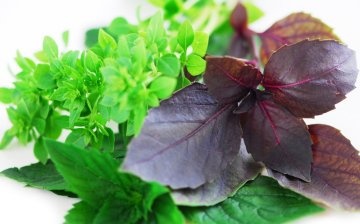




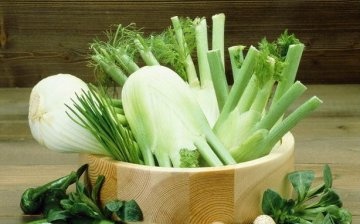







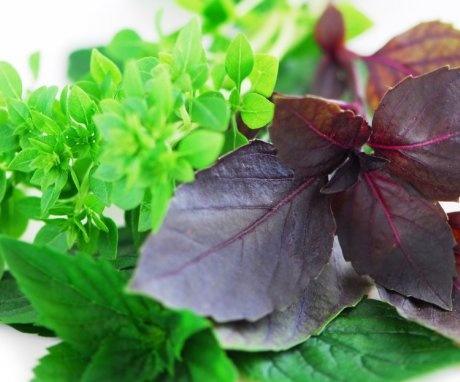

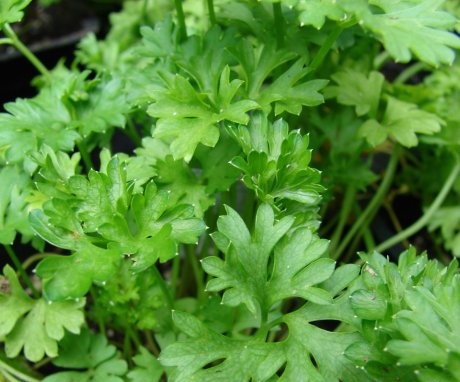
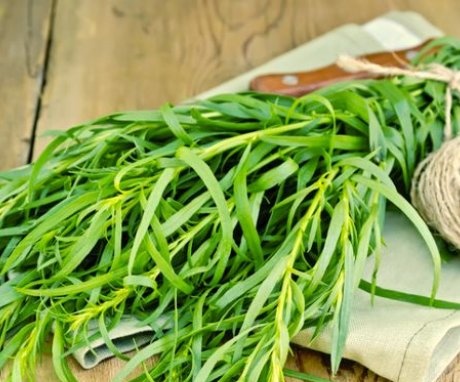
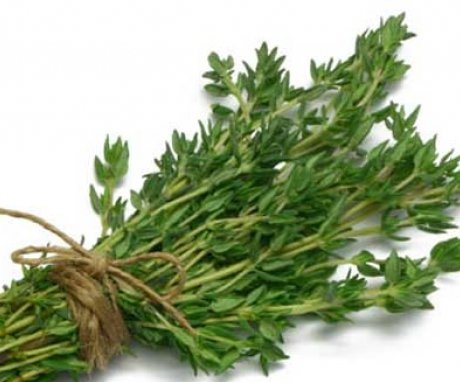
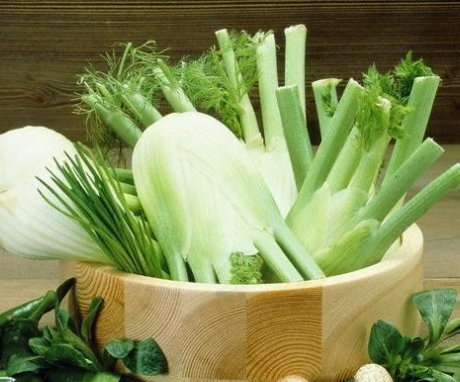
I love herbs very much and every summer I plant a lot of varieties. But even in winter I am not left without fresh greenery. Sometime in early September, I plant parsley, dill and basil in potted pots and send them to the balcony. Within a month, the first shoots appear.